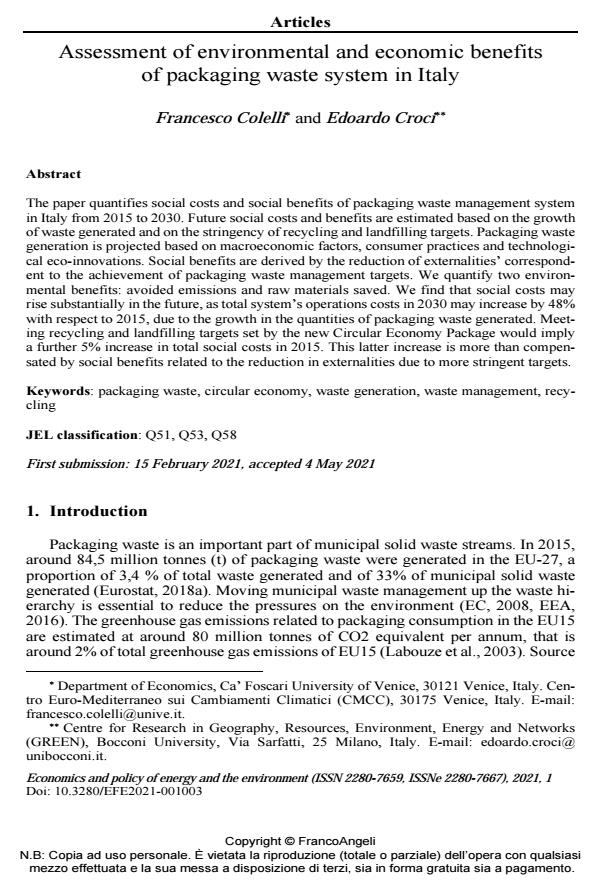Assessment of environmental and economic benefits of packaging waste system in Italy
Titolo Rivista ECONOMICS AND POLICY OF ENERGY AND THE ENVIRONMENT
Autori/Curatori Francesco Colelli, Edoardo Croci
Anno di pubblicazione 2021 Fascicolo 2021/1
Lingua Inglese Numero pagine 22 P. 37-58 Dimensione file 363 KB
DOI 10.3280/EFE2021-001003
Il DOI è il codice a barre della proprietà intellettuale: per saperne di più
clicca qui
Qui sotto puoi vedere in anteprima la prima pagina di questo articolo.
Se questo articolo ti interessa, lo puoi acquistare (e scaricare in formato pdf) seguendo le facili indicazioni per acquistare il download credit. Acquista Download Credits per scaricare questo Articolo in formato PDF

FrancoAngeli è membro della Publishers International Linking Association, Inc (PILA)associazione indipendente e non profit per facilitare (attraverso i servizi tecnologici implementati da CrossRef.org) l’accesso degli studiosi ai contenuti digitali nelle pubblicazioni professionali e scientifiche
The paper quantifies social costs and social benefits of packaging waste management system in Italy from 2015 to 2030. Future social costs and benefits are estimated based on the growth of waste generated and on the stringency of recycling and landfilling targets. Packaging waste generation is projected based on macroeconomic factors, consumer practices and technological eco-innovations. Social benefits are derived by the reduction of externalities’ correspondent to the achievement of packaging waste management targets. We quantify two environmental ben-efits: avoided emissions and raw materials saved. We find that social costs may rise substan-tially in the future, as total system’s operations costs in 2030 may increase by 48% with re-spect to 2015, due to the growth in the quantities of packaging waste generated. Meeting recy-cling and landfilling targets set by the new Circular Economy Package would imply a further 5% increase in total social costs in 2015. This latter increase is more than compensated by so-cial benefits related to the reduction in externalities due to more stringent targets.
Parole chiave:packaging waste, circular economy, waste generation, waste management, recy-cling
Jel codes:Q51, Q53, Q58
Francesco Colelli, Edoardo Croci, Assessment of environmental and economic benefits of packaging waste system in Italy in "ECONOMICS AND POLICY OF ENERGY AND THE ENVIRONMENT" 1/2021, pp 37-58, DOI: 10.3280/EFE2021-001003